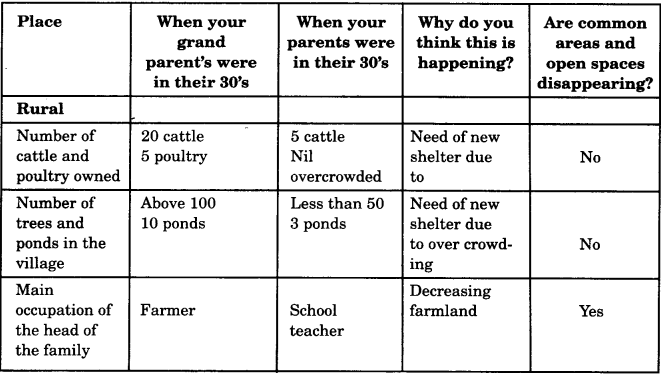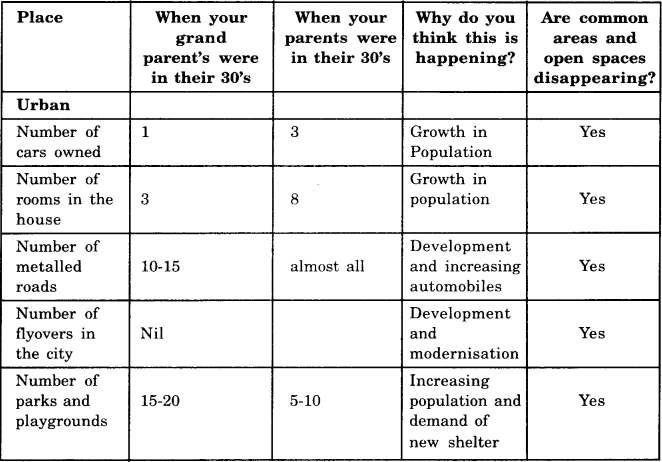Land, Soil, Water, Natural Vegetation and Wildlife Resources Class 8 Questions and Answers Geography Chapter 2
Geography Class 8 Chapter 2 NCERT Textbook Questions and Answers
Question 1.
Observe the land, type of soil and water availability in the region you live. Discuss in your class, how it has influenced the lifestyle of people there.
Answer:
Hints :
Land, type of soil and water availability influence the life style of the people living there because generally human activities are influenced by environment. For remaining take the help of your class teacher.
Question 2.
Table 2.1 : Land use in selected countries
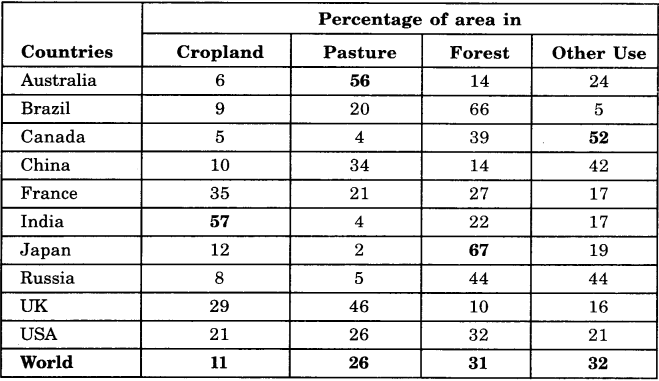
Study the above table and answer the following :
(i) Name the countries having the highest percentage of land under cropland, forest, pasture and other uses.
(ii) How would you relate the land use patterns of these countries with the probable economic activities?
Answer:
(i) The countries with the highest use of land under cropland, forest, pasture and other crops are as follows :
Cropland : India (57%)
Forest : Japan (67%)
Pasture : Australia (56%)
Other uses : Canada (52%)
(ii) The land use pattern of these areas affects the economic activities of these countries in the sense that people and their demands are ever growing, however, the availability of land is limited. In the same way the quality of land is also different from one place to another. The common man is encroaching land for housing and industrialisation purposes. In rural areas land is expanded to increase agricultural needs. This also affects the social culture.
Question 3.
Activity : In India soils could be alluvial, black, red, laterite desertic and mountain soil. Collect a handful of different types of soil and observe. How are they different?
Answer:
- Alluvial soil : It is very fertile and good for crops. It is generally found along the belt of rivers.
- Black soil : It is black in colour. It is fertile and good for cotton crops.
- Red soil : It is red in colour and rich in iron. It is porous in nature.
- Laterite soil : It is less fertile with low content of nitrogen, phosphate and calcium.
- Desertic soil : Mostly sandy and alkaline in nature.
- Mountain soil : Mostly thin and infertile.
Question 4.
Answer the following questions.
(i) Which are two main climatic factors responsible for soil formation?
(ii) Write any two reasons for land degradation today.
(iii) Why is land considered an important resource?
(iv) Name any two steps that government has taken to conserve plants and animals.
(v) Suggest three ways to conserve water.
Answer:
(i) The two main climatic factors responsible for soil formation are temperature and rainfall. Rainfall contributes in breaking the rocks by applying pressure. Temperature fluctuations between hot and cold also form cracks in the rocks.
(ii) Reasons for land degradation are :
- Destruction of forest cover.
- Ever growing demand of the growing population.
(iii) Land is considered an important resource because it provides surface for agriculture, living, forestry, industries, construction, etc. Most of the activities take place on land.
(iv) Steps taken by the government to conserve plants and animals are :
- Establishment of natural parks and wildlife sanctuaries in different parts of the country.
- Conservation of important species of plants and animals.
(v) Three ways to conserve water are :
- By rain water harvesting : By this method rain water can be collected and used at the time of scarcity.
- Drip irrigation to be practised in dry regions.
- Proper irrigation system so that water is not lost at the time of irrigation.
Question 5.
Tick the correct answer.
(i) Which one of the following is NOT a factor of soil formation?
(a) time
(b) soil texture
(c) organic matter
Answer:
(b) soil texture
(ii) Which one of the following methods is most appropriate to check soil erosion on steep slopes?
(a) shelter belts
(b) mulching
(c) terrace cultivation
Answer:
(c) terrace cultivation
(iii) Which one of the following is NOT in favour of the conservation of nature?
(a) switch off the bulb when not in use
(b) close the tap immediately after using
(c) dispose playbacks after shopping
Answer:
(c) dispose playbacks after shopping
Question 6.
Match the following :
| (i) Land use | (a) prevent soil erosion |
| (ii) Humus | (b) land suitable for agriculture |
| (iii) Rock dams | (c) productive use of land |
| (iv) Arable land | (d) organic matter deposited on top soil |
| (e) contour ploughing |
Answer:
| (i) Land use | (c) productive use of land |
| (ii) Humus | (d) organic matter deposited on top soil |
| (iii) Rock dams | (a) prevent soil erosion |
| (iv) Arable land | (b) land suitable for agriculture |
Question 7.
State whether the given statement is true or false.
If true, write the reasons.
(i) Ganga-Brahmaputra plain of India is an overpopulated region.
(ii) Water availability per person in India is declining.
(iii) Rows of trees planted in the coastal areas to check the wind movement is called intercropping.
(iv) Human interference and changes of climate can maintain the ecosystem.
Answer:
(i) True
(ii) True
(iii) False
(iv) True.
Question 8.
Activity
Discuss some more reasons which are responsible for changes of land use pattern. Has your place undergone any change in the land use pattern in recent years?
Find out from your parents and elderly people. You can conduct an interview by asking the following questions.
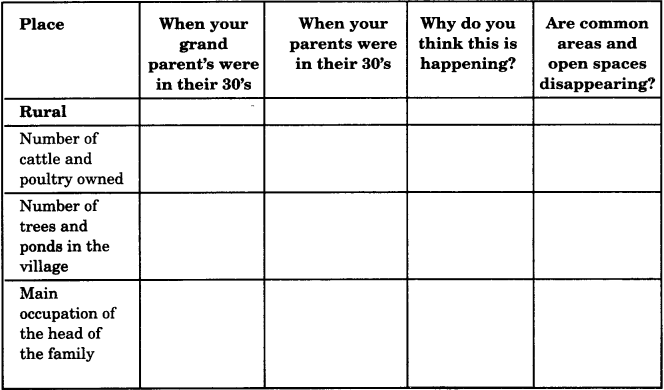
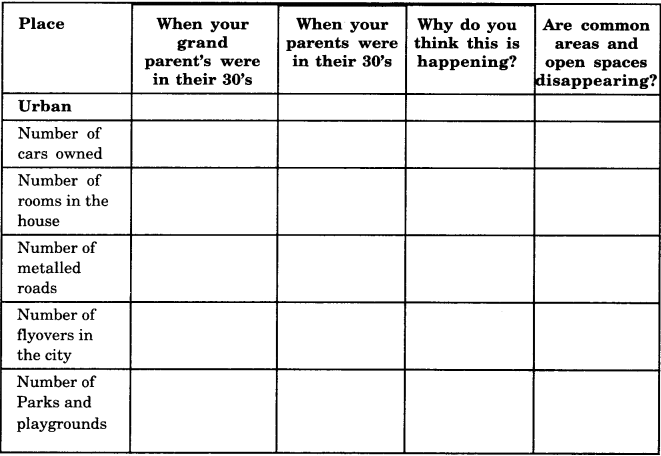
Answer:
